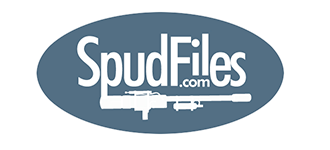With some company sposorship's and some selling of stuff i didn't need, a railgun is going to happen now! Planned specs is as follows:
1 Bank energy of 5.6kJ, i plan to expand it over time
2 railgun constructed of G-11 garolite (strong stuff)
2 feet long, one foot is for injection
Supported by 24 steel bolts (ya stainless would be better)
3 .5" square bore
4 60 PSI triggered burst disc injection (120 PSI once i get a decent pump)
5 velocity measurment via physical projectile detection and a LM339 circuit to interface to a PC
6 Testing of parrallel and series agumentation
I plan to make a rogowski coil to measure peak currents. Rest of the capacitors should come any day now, along with the order from mcmaster (alu bus bars, corrosion inhibitor, bolts, rails) Rails will be 1/8" thick 3/4" wide copper, 1 ft long.
BTW, this will look remarkably similar to powerlabs railgun, but i was planning this long before i saw his site, believe it or not =p
More updates to come (and pics)! (as i remeber stuff....)
Supersonic speeds are expected after most of the reasearch.
Railgun project thread
Interesting, i have been researching railguns recently and have put in some thought about making one. But i would still need to learn more about its operation and electronics, but i do know the general concept.
Now can you tell me what are you using a triggered burst disc injection for?
Now can you tell me what are you using a triggered burst disc injection for?
4SPC, My 4" piston 3" porting cannon
Memo:
Fix up copper cannon
Fix up 4SPC
Start Stirrup pump
Start Toolies piston bazooka
Memo:
Fix up copper cannon
Fix up 4SPC
Start Stirrup pump
Start Toolies piston bazooka
The projectile is the switch. A solid state switch would have to be huge (and expensive) to handle the current. In a injected version, there is a fake rail before the real rail, so no power goes in it. The bank is charged, and the injection triggered. This propels the aluminum into the rails, where EM forces take over.
The pneumatic cannon also helps prevent the projectile from welding to the rails when the power goes on because it's already moving when it hits them 
nooooooooooo!
popular misconception (i blame powerlabs). Welding is not a problem, unless you try to put the projectile in loosely, so it would just fall down. The Navy's railgun used a solid state switch, there projectile started in the rails. They used a hydraulic press to push it in.
The projectile moving when it hits the rails would also make it quite more likely to weld. Keep in mind a railgun is basically a hard short, which means high currents in short amounts of time. The projectile will not go smoothly into the rails, and the current will get to atleast 5kA before the projectile is in completely, unless you have a very fast injection (im talking supersonic) It also depends on the power levels though..
popular misconception (i blame powerlabs). Welding is not a problem, unless you try to put the projectile in loosely, so it would just fall down. The Navy's railgun used a solid state switch, there projectile started in the rails. They used a hydraulic press to push it in.
The projectile moving when it hits the rails would also make it quite more likely to weld. Keep in mind a railgun is basically a hard short, which means high currents in short amounts of time. The projectile will not go smoothly into the rails, and the current will get to atleast 5kA before the projectile is in completely, unless you have a very fast injection (im talking supersonic) It also depends on the power levels though..
It doesnt neccecairly have to weld, it could also just cause extra wear because the rails get too hot on that spot.
Its over nineTHOUSAAAAAND!
Vegeta, what does the scouter say about his power level?It also depends on the power levels though..
Its over nineTHOUSAAAAAND!




